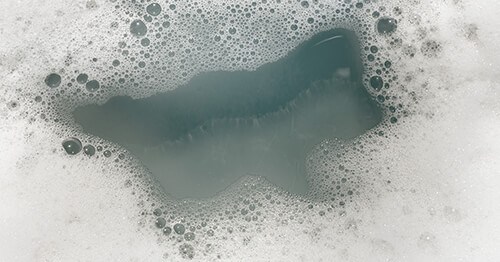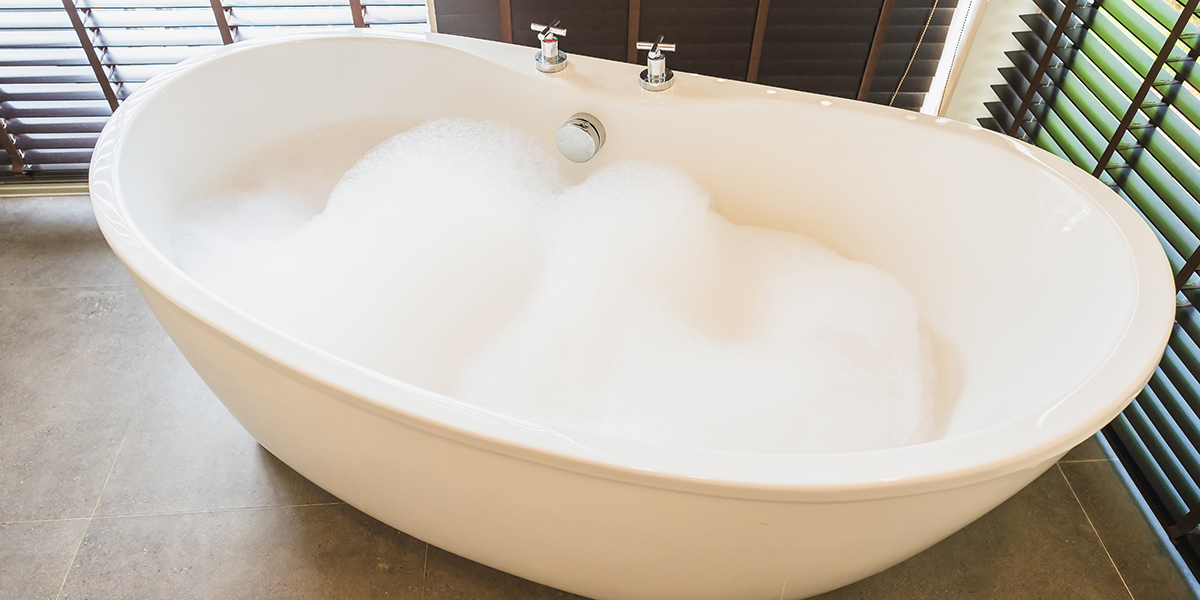Triggers for Discharge Rising Through the Bathtub
Triggers for Discharge Rising Through the Bathtub
Blog Article
The article author is making a few good observations regarding Why sewage is coming up through your bathtub as a whole in this post down below.

Sewage back-up in the bath tub can be an upsetting and unhygienic problem for any kind of house owner. Not just is it bothersome, but it likewise postures significant health threats and indicates underlying issues with the plumbing system. Comprehending why sewer is coming up through the bath tub is vital for taking ideal action to deal with the problem successfully.
Introduction to the Problem
Understanding the Issue
When sewer starts backing up right into the bath tub, it's a clear indicator of a trouble with the drain system. The wastewater that should be streaming far from your home is rather finding its back into your living space, which can cause substantial damage and health hazards.
Prospective Causes
Numerous elements can add to sewer backup in the bath tub. From obstructions in the drain line to problems with the plumbing infrastructure, identifying the origin is vital for discovering a solution.
Common Factors for Sewer Backup
Blockages in the Sewer Line
Among one of the most common reasons for sewer backup is a blockage in the drain line. This can occur as a result of the accumulation of debris, grease, or foreign things in the pipelines, avoiding proper circulation and triggering sewage to support right into your bath tub.
Tree Origin Breach
Tree roots seeking wetness and nutrients can penetrate sewage system lines through tiny cracks or joints. With time, these roots can expand and increase, causing considerable damages to the pipelines and resulting in sewer backup issues.
Aging Facilities
Older homes may have outdated plumbing systems that are much more prone to rust, splits, and degeneration. As pipes age, they become a lot more prone to leaks and clogs, enhancing the chance of sewer backup occurrences.
Heavy Rainfall or Flooding
Throughout durations of heavy rainfall or flooding, the drain system may become overwhelmed with excess water, triggering backups and overflows. This can lead to sewage supporting into bathtubs and other fixtures inside the home.
Wellness Risks Connected With Sewage Back-up
Contamination of Water Supply
Sewer backup can pollute the supply of water in your home, posing a major wellness risk to you and your family. Direct exposure to polluted water can cause gastrointestinal issues, skin infections, and various other ailments.
Spread of Disease
Sewer has dangerous germs, viruses, and bloodsuckers that can trigger a series of diseases, consisting of hepatitis, cholera, and gastroenteritis. Entering into contact with sewage or contaminated surfaces places you in jeopardy of infection.
Mold Growth
Dampness from sewage back-up can develop perfect problems for mold growth in your home. Mold and mildew spores can intensify respiratory system issues and create allergic reactions in delicate people, making punctual clean-up important.
Indicators of Sewer Backup
Foul Odors
Undesirable smells originating from drains or fixtures, especially in the restroom, might indicate sewer backup concerns. These smells are often solid and consistent, signifying an issue that calls for instant focus.
Slow Draining Fixtures
Bath tubs, sinks, and commodes that drain slowly or not whatsoever could be experiencing sewer backup. If multiple fixtures are affected concurrently, it's most likely that the issue stems from an usual point, such as the major drain line.
Gurgling Noises
Odd gurgling or gurgling sounds coming from drains when water is running somewhere else in the house are indicative of air entraped in the plumbing system. This air build-up can arise from sewage back-up and should be explored promptly.
Immediate Actions to Take
Turning Off Water System
In case of sewer back-up, it's essential to switch off the supply of water to prevent additional contamination and damages. Situate the primary water shutoff valve in your home and shut it off until the concern can be resolved.
Calling a Professional Plumber
Managing sewage back-up is not a DIY job. Contact a licensed plumber with experience in managing sewage-related concerns to examine the circumstance and do required repair work or cleanups.
Staying Clear Of Contact with Infected Water
Until the sewer backup is resolved, stay clear of contact with polluted water to stop the spread of bacteria and microorganisms. Put on protective gear if you have to be in the affected area and wash your hands thoroughly afterward.
Safety nets
Routine Maintenance of Sewage System Lines
Set up regular evaluations and upkeep of your sewage system lines to recognize and address possible problems prior to they intensify right into major issues. This can include clearing out debris, examining for tree origin intrusion, and repairing any broken pipes.
Installing Backwater Valves
Consider installing backwater shutoffs in your plumbing system to stop sewage from receding right into your home during durations of heavy rainfall or flooding. These valves automatically close when water starts backing up, securing your residential property from contamination.
Correct Disposal of House Waste
Stay clear of flushing anything aside from bathroom tissue and human waste down the bathroom to prevent clogs and blockages in the sewage system line. Dispose of oil, oil, and other home chemicals effectively to lessen the threat of plumbing issues.
Tidying up After Sewer Back-up
Sanitation Procedures
Completely sanitize and sterilize impacted locations after sewer backup to remove damaging bacteria and prevent mold development. Use appropriate cleaning products and safety equipment to ensure secure and reliable cleanup.
Reconstruction of Affected Locations
Fix any damages to flooring, wall surfaces, or components brought on by sewer backup. Depending upon the extent of the damage, you might need to change carpeting, drywall, or other products to recover your home to its pre-loss condition.
Why is Sewage Coming Up Through Your Bathtub?
Reasons You May Have Sewage in Your Bathtub
All the drains in your home lead down different pipes to get to the main sewer line. If you’re seeing sewage in the bathtub, the problem is that the main sewer line is clogged up, which is causing the water running through other drains to be pushed back into other pipes. The problem isn’t the bathtub, but the main line. The sewer line can get backed up by anything that goes down the drain, from food waste, hair and soap particles to jewelry or children’s toys. Tree branches or dirt can also impact the sewer line. If you’re seeing sewage in the bathtub, you have a big problem that usually needs a professional plumber. Trying to fix this problem without the right tools or knowledge can lead to bigger plumbing problems.
Fixing a Clogged Sewage Line
Although you shouldn’t try to fix the clogged sewer line on your own, you may be able to mitigate the issue until you can get a plumber to your home. A plunger isn’t going to help, because it won’t be able to reach the sewage drain to unblock the problem.
Turn Off Water
Find the main shutoff valve to your home to turn off the water. This prevents more water from going down the drain which is only going to flow back into your bathtub.
Snake the Toilet and Drain
Start by using a drain pipe snake to clean out the toilet drain. Rotate the snake clockwise when you push the snake down. As you pull it out, the snake should spin counterclockwise. Follow up by snaking out the bathtub drain. If you are successful, both the toilet and shower will drain efficiently. If you’re not successful, you probably have a bigger problem than your tools and experience can manage.
Contact a Professional Plumber
Pros have the tools to find the source of the problem and the experience to manage big blockages without causing more damage to your pipes. It can save you a lot of stress by contacting the professionals sooner rather than later.
Identify the Early Signs of a Clogged Sewage Line
If you’re gearing up for a holiday family gathering or just want to avoid the hassle of a clogged sewage line in your home, make sure you recognize the signs of a clogged sewer line.
Slow drains are a sign of a sewer line problem. Gurgling drains from any drain in your home indicate that you may have an obstruction in the drains. If your toilet keeps getting clogged, it might be a problem with the sewer line. When you see laundry water or water from the dishwasher in different sinks in the home, it’s an indication that your sewer drain is beginning to get backed up. These symptoms can often be “fixed” temporarily to get through a day or week before you start seeing the same problem. When it comes to plumbing problems, you want to fix the root of the problem instead of muddling through. The clog will not go away on its own.
https://handymanconnection.com/mississauga/articles/why-is-sewage-coming-up-through-your-bathtub/

As a keen reader on Why is Sewage Backing Up Into My Bathtub?, I assumed sharing that editorial was really useful. Sharing is good. You won't know, you may be helping someone out. Thanks for being here. Don't forget to visit our website back soon.
Request Estimate
Report this page